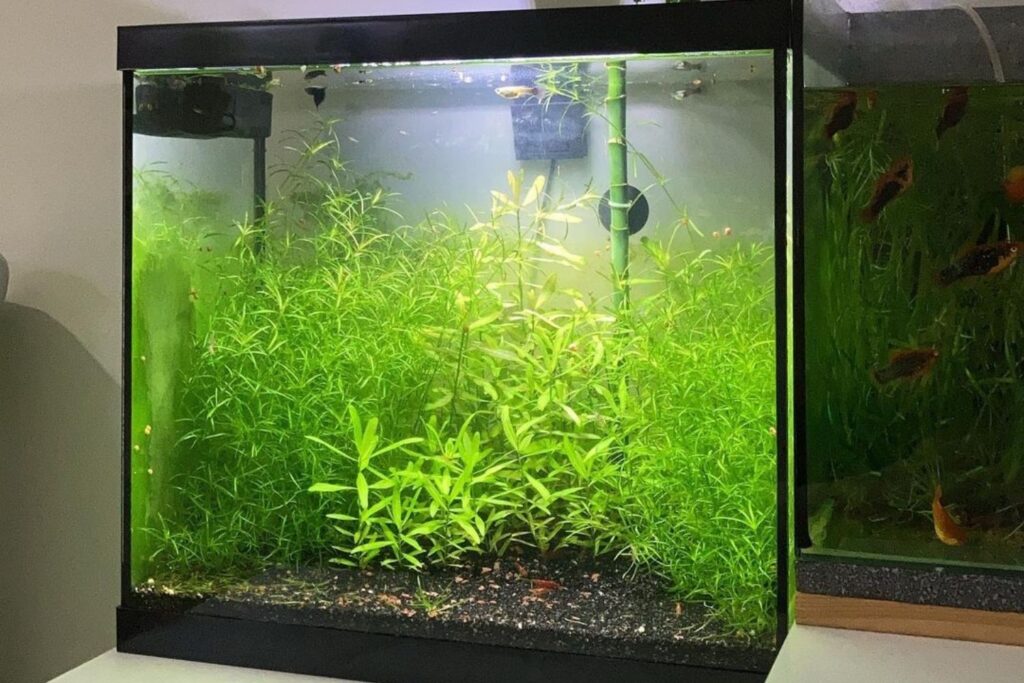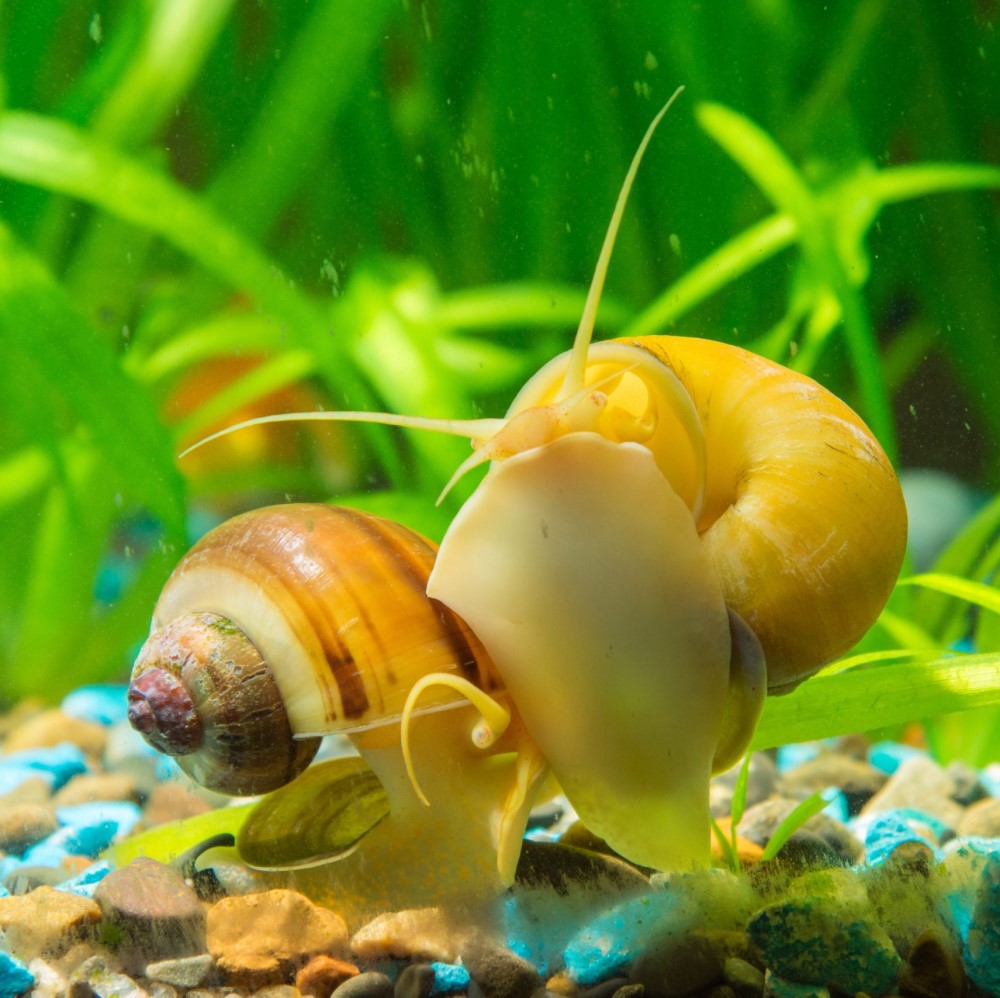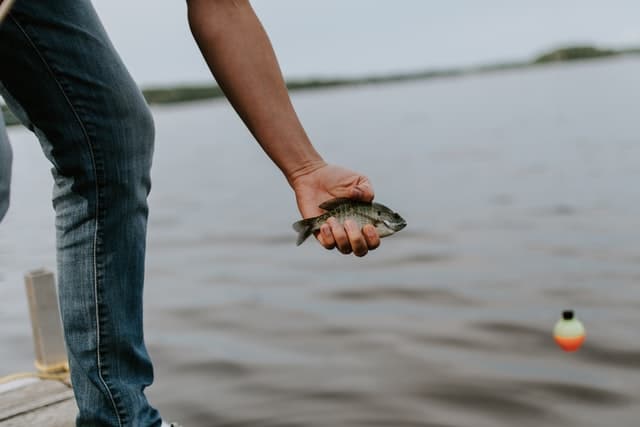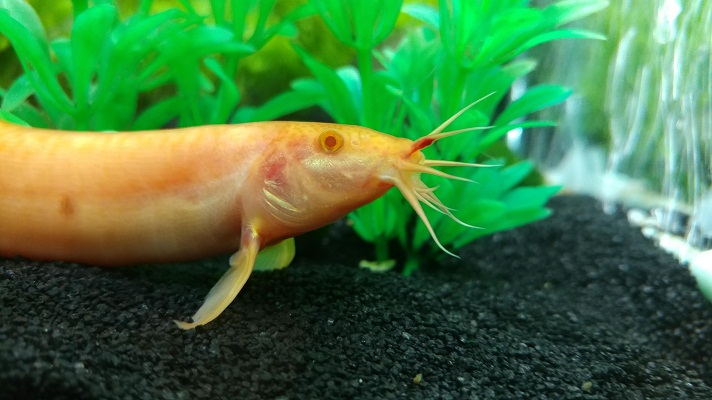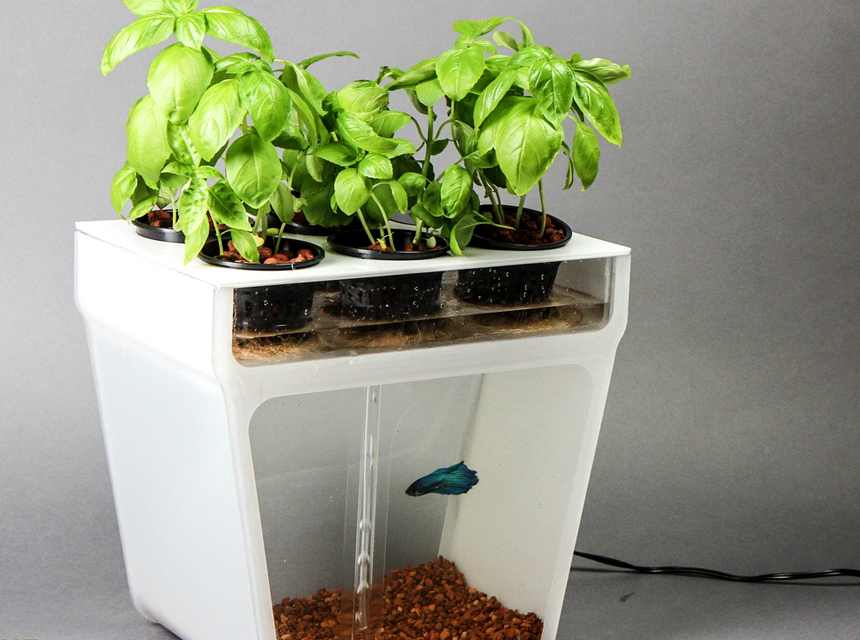

When looking at shrimp for an aquarium, deciding Amano shrimp Vs ghost shrimp is a frequently asked question. Amano shrimp are freshwater shrimp that are used to help keep tank algae under control and add color. The Amano shrimp will eat more algae than other shrimp, which makes them ideal for controlling the growth of algae in a fish tank. Ghost shrimp are one of the most frequently purchased shrimp for freshwater aquariums. Mostly, these are sold to feed larger fish, but they can be sold as pets too. The term ‘ghost shrimp’ is a generic term given to lots of species of shrimp that are clear and have a similar shape and size. In this article, we’ll look at the differences between ghost shrimp and Amano shrimp to help you decide which to use in your aquarium.
When deciding between Amano shrimp Vs ghost shrimp, you need to understand their differences. The first notable difference is that ghost shrimp spend most of their time up in the water looking for food. Amano shrimp Cardinia multidentate), on the other hand, are bottom feeders. This means that they will eat their food from the bottom of your tank, from the substrate. Read on to uncover more differences between ghost shrimp and Amano shrimp. We’ll discuss diet differences, their lifespan, appearance, and breeding habits. We’ll also mention any similarities between the two.
The biggest difference between Amano shrimp and ghost shrimp is their preferences in terms of their habitat. As mentioned above, Amano shrimp are bottom feeders. This means they like to stay lower in the water and will remain close to the substrate and rocks. On the other hand, ghost shrimp will be in the water column as they look for their food.
Usually, Amano shrimp are the larger of the two. They will stay close to plants and rocks to feel safe when feeding. They will remain close to or under tank objects, too, like logs, rocks, and plants (even fake ones).
In terms of size requirements, each Amano shrimp needs ten gallons. So, if you were to have five Amano shrimp, you’d need a fifty-gallon tank.
The water must also be one gallon for each inch of depth. These shrimps thrive in tanks that are highly oxygenated. They need high-grade filters to get rid of toxic ammonia in the water as they are particularly susceptible to this.
Unless they are housed with other fish, ghost shrimp don’t need lots of space. They’re quite timid and aren’t aggressive, and can be housed easily with other shrimp or fish. You won’t find these shrimp getting any larger than one to two inches, so when you keep them alone, your tank can be any size from five gallons, similar to this. Ghost shrimp prefer a tank with substrate and need some water movement too.
As for temperature and lighting, ghost shrimp are really easy. They prefer temperatures between 20 °C and 24 °C (68 – 75 °F), but they don’t need any specific lighting. What’s more, you can keep them on their own or along with other fish that aren’t too big, e.g., mollies and neon tetras.
Amano shrimp will eat most things. They’re omnivores and feed on dead organisms, animal life, and plant life. Ghost shrimp are similar in terms of their diet, but they prefer eating higher in the water and not on the bottom of the tank, where the food sources are more diverse than is found on the top of plants or rocks.
Amano shrimp typically remain near objects like plants and logs when they are feeding underneath. They won’t jump out to look for new sources of food. They’ll eat almost anything (ghost shrimp are much fussier). Amano shrimp need lots of food from different sources like:
You need to be careful when feeding Amano shrimp because if they eat too much of one nutrient and not enough of another, they can get sick or die.
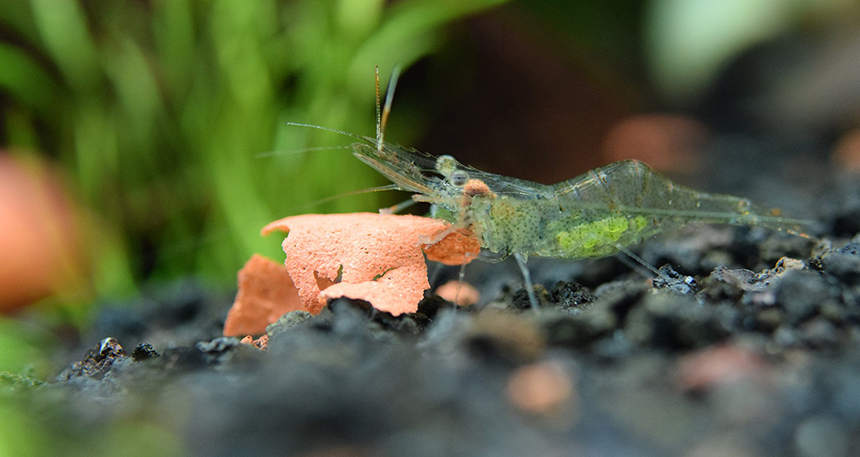
You also need to ensure their tank is extremely clean because when bacteria take over, the water quality is lower, and plant life and everything else dies. For ghost shrimp, you need to make sure they have adequate calcium too so that they grow strong shells. Ghost shrimp will sift through sand or soil to look for organic matter, including:
They like ‘meaty’ things and need more protein than the Amano because Amano shrimp get protein from lots of plant matter.
If you have both Amano shrimp and ghost shrimp in a single tank, you’d need to feed them at separate times because Amano shrimp will steal food from ghost shrimp mouths. You also can’t trust Amano shrimp with ghost shrimp eggs as they’ll eat these too.
When it comes to Amano shrimp and ghost shrimp and size, the Amano is much bigger. Amano shrimp lose color as they age while their counterparts keep theirs. In terms of survival, ghost shrimp can survive with cooler water temperatures compared to Amano shrimp, but they won’t survive the coldest months of winter without a heater.
Ghost shrimp live for around twelve months and grow to around two inches in length. This makes them a great size for your feeder fish. Typically, they are black with blue stripes, and their colorful appearance and peaceful demeanor make them a popular shrimp for aquarium use. Their bodies are elongated, so their colors are seen well. They’re usually small as far as shrimp go, and their average length is around one inch. Ghost shrimp are located all over the world.
Ghost shrimp get their name because they are almost transparent. Their long bodies have a high water content, which makes light able to pass through them. You might even hear them being called ‘ glass shrimp Trusted Source ADW: Palaemonetes paludosus: INFORMATION Eastern grass shrimp are transparent. Individuals grow to be approximately 47 mm long. Adults usually do not exceed 50 mm long. Males and females are dimorphic. Males are distinguished from females by differences in the first and second pleopods. Males can be separated from females by the presence of the appendix masculina attached to the appendix interna on the endopod of the second pair of pleopods. Also, the endopod of the first pleopod is larger in males than in females. animaldiversity.org ’ because of this. Being able to see through them means you can look at a ghost shrimp’s internal organs easily, which is pretty cool.
Amano shrimp Trusted Source Amano shrimp: Spineless heroes - Practical Fishkeeping The true Amano shrimp is Caridina multidentata, but you might see them bandied about under their synonym of Caridina japonica. Certainly when Takashi stumbled across and popularised them in the 1980s, that was the name they were recognised by. It was only in 2006 that revision took place and gave them their current identity of C. multidentata. www.practicalfishkeeping.co.uk are bigger than ghost shrimp. They start off with color stripes, but these fade as they get older. There are some Amano shrimp that do keep their color a bit, though. Typically, Amano shrimp have white bodies with red stripes. This makes them attractive in a tank. They will grow to a maximum size of around four inches long and will be around two inches across.
Due to their less frequent reproduction, you can expect Amano shrimp to live for at least two years and up to three – to one year longer than ghost shrimp.
When you purchase an Amano shrimp, it will typically be a juvenile that is around one inch in length. At this age, it is easy to confuse them with ghost shrimp due to their similar coloration. However, an Amano shrimp will grow more quickly than a ghost shrimp and will reach the desired size for breeding at three months. Ghost shrimps, on the other hand, take around nine months to get to the right size for breeding – and only if there is sufficient food and adequate conditions.
If we compare ghost shrimp to Amano shrimp, many people call the ghost shrimp the freshwater equivalent of the Amano shrimp. Amano shrimp can survive in freshwater, though, but they thrive better in saltwater and will typically only breed in saltwater too. By contrast, ghost shrimp will only live in freshwater.
If you want to breed shrimp, you’ll probably have a higher success rate with Amano shrimp compared to ghost shrimp. This is because Amano shrimp are able to reproduce around three months – a whole six months earlier than ghost shrimp.
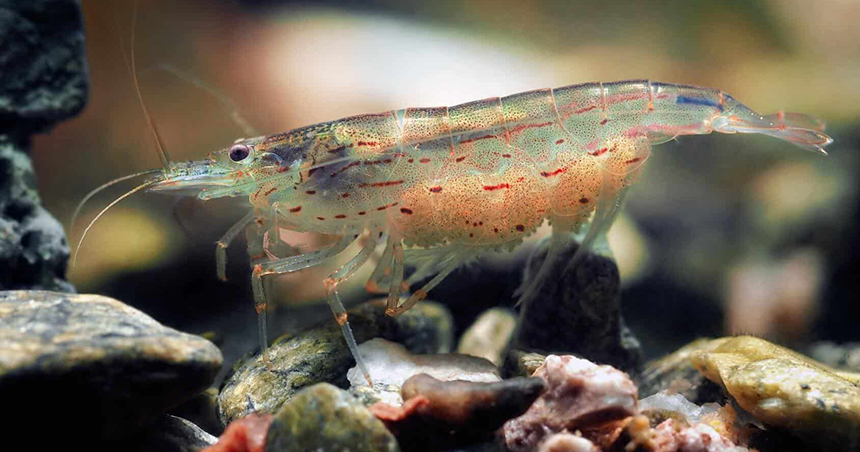
They’re not very sensitive to changes in water temperature and so will breed at all times of the day. You can breed them in tanks that have at least twenty gallons of water, and you should include some live plants, driftwood, rocks, or any other decorative tank items. Choosing items like this will increase the likelihood of successful reproduction as most breeding will take place around shady decorations like this shrimp cave and plants. It is quite difficult to breed Amano shrimp. This is because their reproduction cycle in the wild is difficult to duplicate at home. In the wild, a female Amano shrimp will lay eggs and carry them for a while with her under her belly. They will usually stay there until they hatch. When hatched, the hatchlings are swept to sea, and they will live their lives out there until they are fully grown. During adulthood, they return to freshwater rivers for the remainder of their lives.
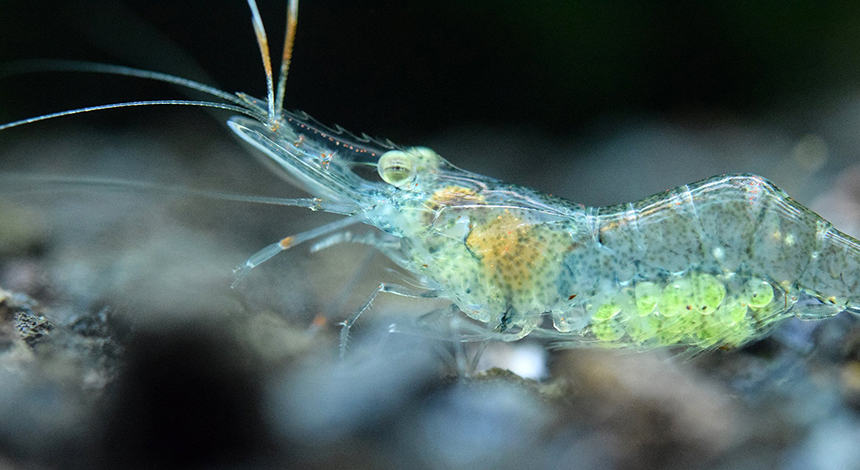
You’ll have to wait a little longer to breed ghost shrimp Trusted Source Interannual Differences in the Estuarine Ghost Shrimp, Neotrypaea californiensis The dispersal of invertebrate marine larvae can be expected to be wide ranging and show little population structure. Neotrypaea californiensis, the burrowing ghost shrimp, is found throughout the waters and coastal estuaries of the northwestern United States. Three hundred and four larval samples were used to study population diversity and structural difference occurring over the course of spawning periods from June to September in successive years (2005 and 2006). core.ac.uk compared to Amano shrimp. They’re typically ready to breed at around nine months of age. Male ghost shrimp will be sexually mature before females, but they won’t usually breed until the females are also sexually mature. Males reach sexual maturity at four months. However, due to their size, females need longer in order for them to be big enough to carry their eggs.
Ghost shrimp and Amano are similar due to their relatively short lifespans. While ghost shrimp tend to live one year, Amano shrimp live as long as three years. Amano shrimp are usually three inches long and are found across Asia. Ghost shrimp, on the other hand, is around half their size. They also prefer mangroves and coral reefs. Ghost shrimp and Amano shrimp have similar coloration, but Amano shrimp show them off for longer. This could be because they have a longer lifespan. While both types of shrimp are transparent, ghost shrimp are considered to be completely transparent, while Amano shrimp are more semi-transparent. Both of these shrimp species are omnivores, and so they both eat insects as well as plant material.
When it comes to Amano vs. ghost shrimp, you’ll have seen there are many similarities and differences. If you’re looking at shrimps for your aquarium and want something that will stay close to the bottom, Amano shrimp are ideal. They will eat from the bottom of the tank on the substrate. However, they won’t be as visible in the tank. Ghost shrimp, on the other hand, spend the majority of their time higher up looking for their next bite to eat. Both types of shrimp are excellent scavengers that help to control tank algae. They both have similar coloring, but because Amano shrimp live longer and are larger, their color is more visible. They look slightly different, but they’re both popular and suit different tanks. If you want something to help keep your tank free from algae without the worry of having too many fish, shrimps are ideal.
